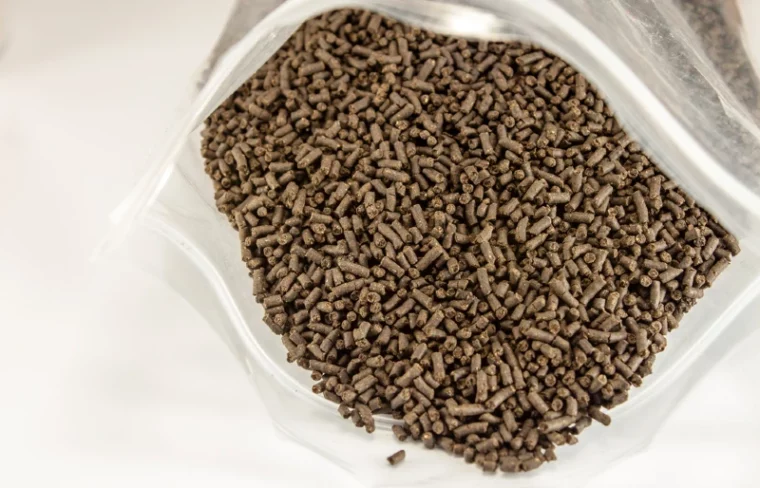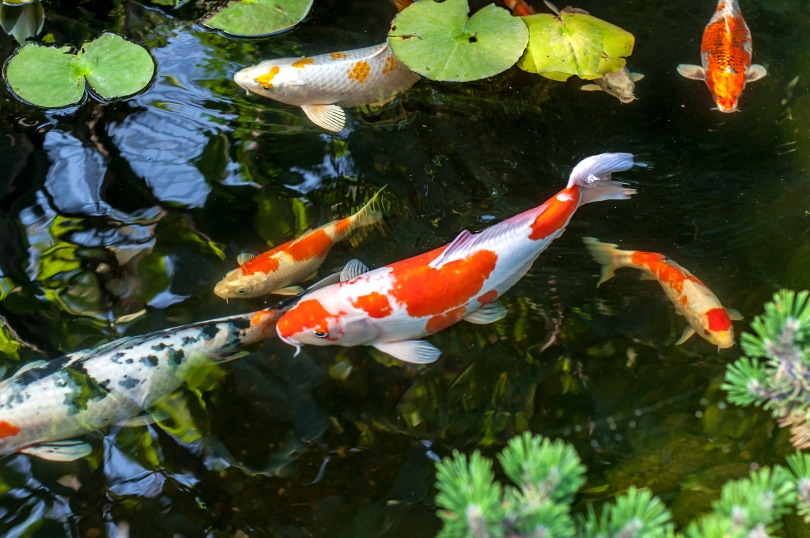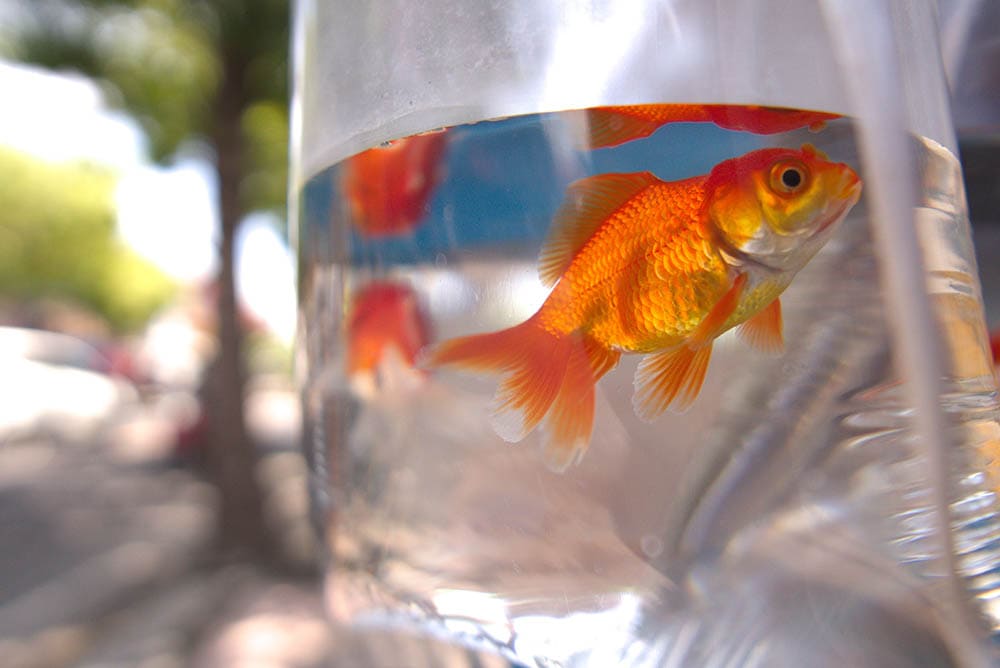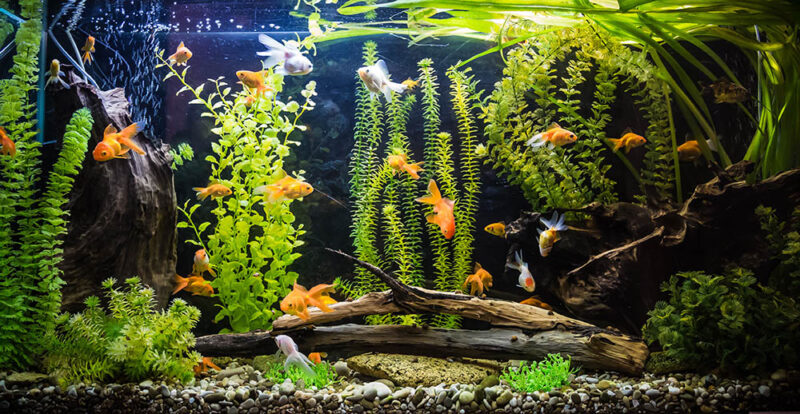
While fish foods are designed to be safe and nutritionally appropriate for fish of many kinds, it’s important to check the labels to ensure you’re feeding your fish a high-quality diet that contains whole food ingredients and that is formulated with their specific nutritional needs in mind.
Choose a food that is appropriate for your fish’s species and eating requirements and avoid foods with the following ingredients.
The 5 Toxic Fish Food Ingredients
1. Mycotoxins
This is the only true toxin on the list, and it isn’t an ingredient you’ll spot in the ingredients list of your fish food. However, mycotoxins are a real threat to the health of your fish. Mycotoxins are a toxic byproduct produced by certain species of fungi. These fungi occur on plant-based foods, like grains, fruits, and spices. If consumed by fish, mycotoxins can lead to low body weight, poor growth, decreased immunity, and an increase in morbidity and mortality.
The more plant-based materials present in your fish food, the higher the risk of mycotoxins being present and leading to mycotoxicosis in your fish. To avoid this, always make sure your fish food is properly sealed at the time of purchase. Store it in a dry environment, as humidity and moisture can lead to mycotoxin growth. Keep it properly sealed and mark the bottle with the date you opened it. Avoid using fish food that has been open for more than 3–6 months.

2. Added Vitamins and Minerals
While some added vitamins and minerals can be good for your fish’s health, fish foods with a long list of added vitamins and minerals are a red flag. The reason for this is because if the food’s base ingredients were properly balanced, then the addition of extra vitamins and minerals wouldn’t be necessary.
The longer the list of vitamins and minerals, the more likely the food you’re feeding is low-quality food. While the risk of harm to your fish in the long-term is low due to added vitamins and minerals, there are far better options available to you than food with a laundry list of added nutrients.
3. Artificial Colors
Artificial colors are often added to fish food to enhance the visual appeal of the food to our human eyes, not to enhance palatability or nutrition for our fish. For this reason, it is best to avoid artificial colors in your fish’s food. Some fish foods contain colorants like “yellow 5”, which have shown some links as potential cancer-causing ingredients in humans. The verdict is still out on the safety of artificial colors, although some artificial colors that are legal in human foods in the US aren’t legal in European countries due to the perceived risk of these ingredients.
The lack of studies makes it impossible to know if these ingredients pose long-term risks to the health of our fish, but it is best to avoid these products, instead looking for more natural ingredients and color enhancers, like spirulina and astaxanthin.
4. Fish Meal
While fish meal is safe for your fish to consume, it’s not the most nutrient-dense protein option for them. Fish meal can be made from the meat of fish, but it can also be made from undesirable parts leftover after manufacturing food for humans, like bones, scales, and organs. Fish meal is also a catch-all term and can be made from any number of fish, including bycatch from fisherman’s nets.
Whole fish meal and more specific proteins, like whole sardine meal, are better options for your fish. Whole meal may still contain undesirable products, but it also contains desirable parts as well, like the meat and skin. Whole fish meal is a more nutrient-dense protein alternative to fish meal.
5. Grains
There are a lot of opinions surrounding the use of grains as fillers and binders in fish food. Some fish do well with grains added to their diets, while other fish have no need for grains. Many fish lack the ability to properly digest grains, which can lead to an increase in waste production when fed grain-based foods.
A large portion of fish foods on the market contain grain fillers or binders, though. Look for foods with whole protein or vegetable ingredients in the first few ingredients on the ingredient list. The lower grains are on the list, the lower the percentage of grains present in the food is. Keep in mind that the more grains present in the food, the higher the risk of mycotoxin growth over time.

What are Toxins?
Here’s the thing about “toxins”—this is a buzzword that has consistently been used to indicate something is “bad”. However, being low-quality doesn’t mean that something is toxic. If you are feeding your fish the only appropriate food that is within your budget, then you’re doing right by your fish. There may be better, more nutrient-dense options on the market, but you aren’t poisoning your fish by feeding a lower quality food.
By definition, toxins are poisonous compounds. Mycotoxins are a true toxin as they are poisonous to your fish and can lead to illness and even death. Artificial colors and fish meal aren’t toxins, but they may still lead to health problems over time in much the same way as it would if you ate fast food for every meal of every day.
Conclusion
While there is only one true toxin on this list, the other ingredients are things that are worth avoiding if you are able to. Many of these ingredients are present in a huge portion of the fish foods on the market, though, so they can be difficult to work around. Aim to feed your fish the highest quality food that is within your budget, and work to provide a varied diet that is appropriate for their dietary needs. This will help you ensure your fish’s nutritional needs are being met.
Featured Image Credit: photosthai, Shutterstock










